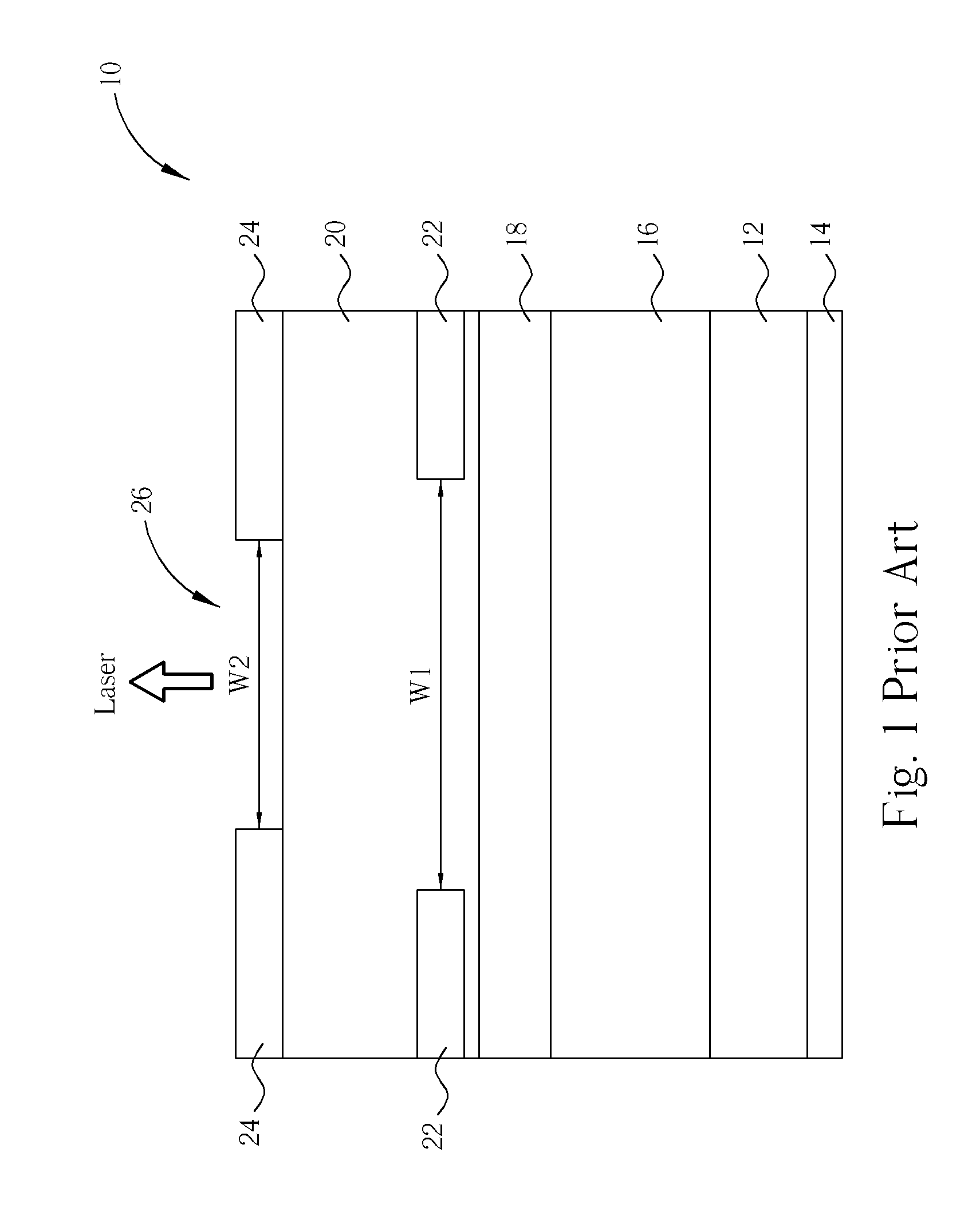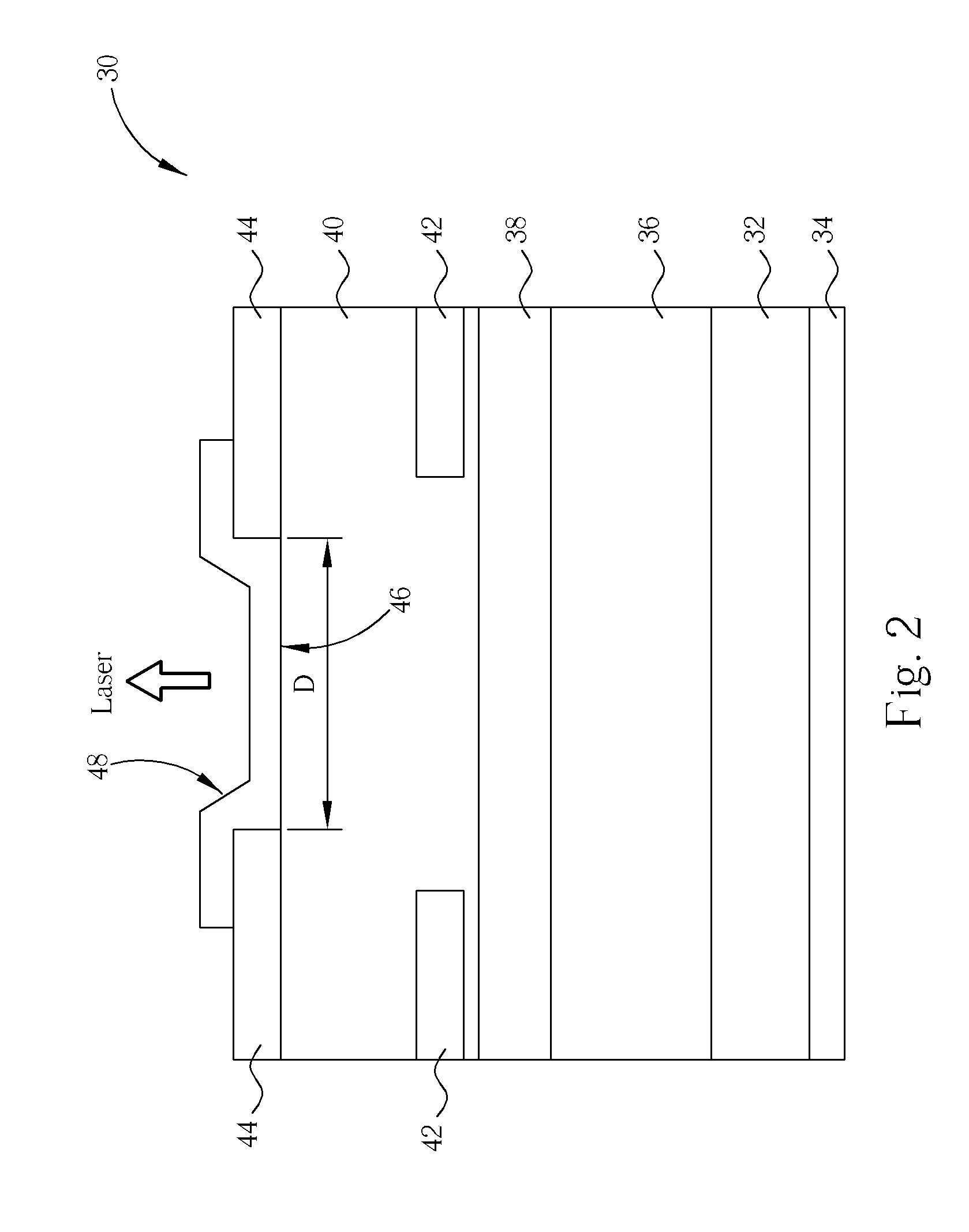High-power single-mode vertical cavity-surface emitting laser
a laser and vertical cavity technology, applied in semiconductor lasers, laser details, optical resonator shape and construction, etc., can solve the problems of device to generate more heat, low uniformity, low yield, etc., and achieve stable generation and restraint of high-level generating.
- Summary
- Abstract
- Description
- Claims
- Application Information
AI Technical Summary
Benefits of technology
Problems solved by technology
Method used
Image
Examples
first embodiment
[0020] Please refer to FIG. 2, which is a diagram of a vertical cavity-surface emitting laser 30 capable of outputting single-mode lasers according to the present invention. In this embodiment, the vertical cavity-surface emitting laser 30 is produced through an ion-implanted technique. The vertical cavity-surface emitting laser 30 comprises a substrate 32; an N-type metal 34, which can comprise AuGe, Ni, and Au and is formed below the substrate 32; an N-type DBR 36, which can comprise compound semiconductor materials and is formed above the substrate 32; an active region 38 formed above the N-type DBR 36 for generating a laser; a P-type DBR 40, which can comprise compound semiconductor materials and is formed above the active region 38; an ion-implantation layer 42, which is formed in the P-type DBR 40 by doping and implanting protons whose density is 3*1014 ions / cm2 and whose energy is 300 KeV for limiting a flow direction of the injected currents of the vertical cavity-surface em...
third embodiment
[0028] Please refer to FIG. 5, which is a diagram of a vertical cavity-surface emitting laser 60 capable of outputting single-mode lasers according to the present invention. In this embodiment, the devices of the same number have the same function and structure, and are thus omitted here. In this embodiment, the VCSEL 60 is produced through the intracavity oxide-confined procedures. Therefore, the VCSEL 60 can be utilized in a high frequency device (e.g. >5 Gbps) or a range of visible lights and long wavelength. The VCSEL 60 also comprises a substrate 32; an N-type DBR 36, which can comprise compound semiconductor materials and is formed above the substrate 32; an N-type contact layer 62 which can comprise AuGe, Ni, and Au and is formed above the N-type DBR 32; an N-type metal 64 which can comprise AuGe, Ni, and Au and is formed above the N-type contact layer 62; an active region 38 formed above the N-type DBR 36 for generating a laser; a P-type contact layer 66 formed above the act...
PUM
 Login to View More
Login to View More Abstract
Description
Claims
Application Information
 Login to View More
Login to View More - R&D
- Intellectual Property
- Life Sciences
- Materials
- Tech Scout
- Unparalleled Data Quality
- Higher Quality Content
- 60% Fewer Hallucinations
Browse by: Latest US Patents, China's latest patents, Technical Efficacy Thesaurus, Application Domain, Technology Topic, Popular Technical Reports.
© 2025 PatSnap. All rights reserved.Legal|Privacy policy|Modern Slavery Act Transparency Statement|Sitemap|About US| Contact US: help@patsnap.com



